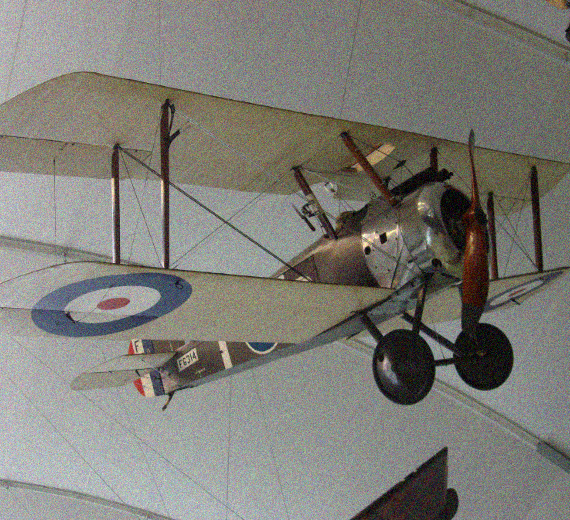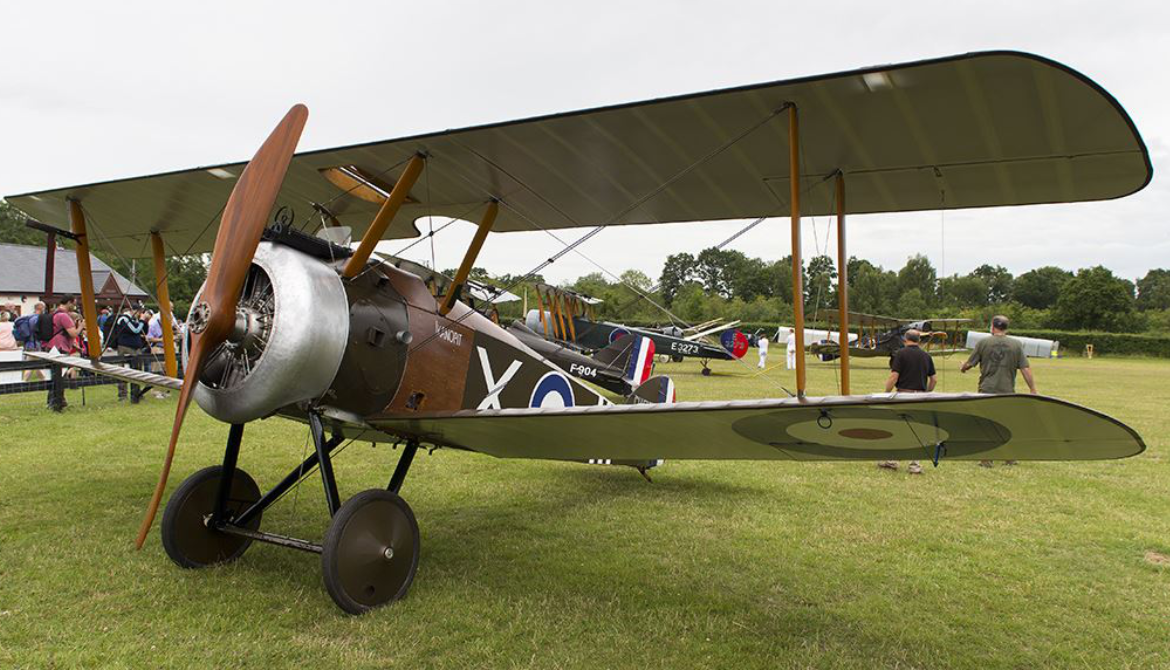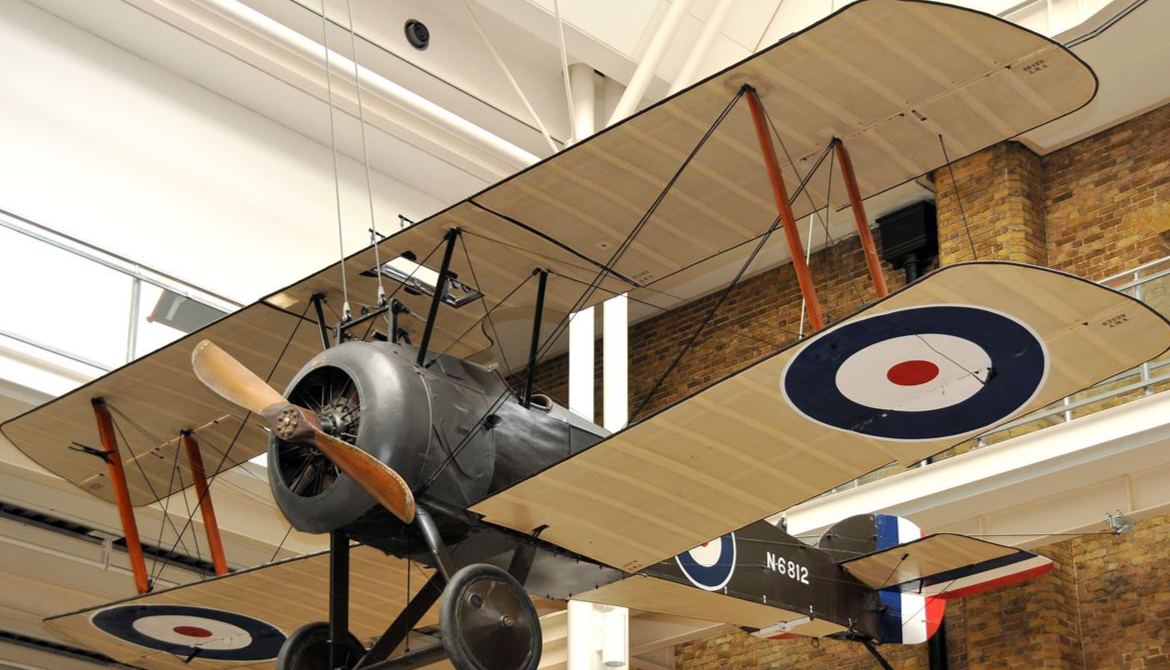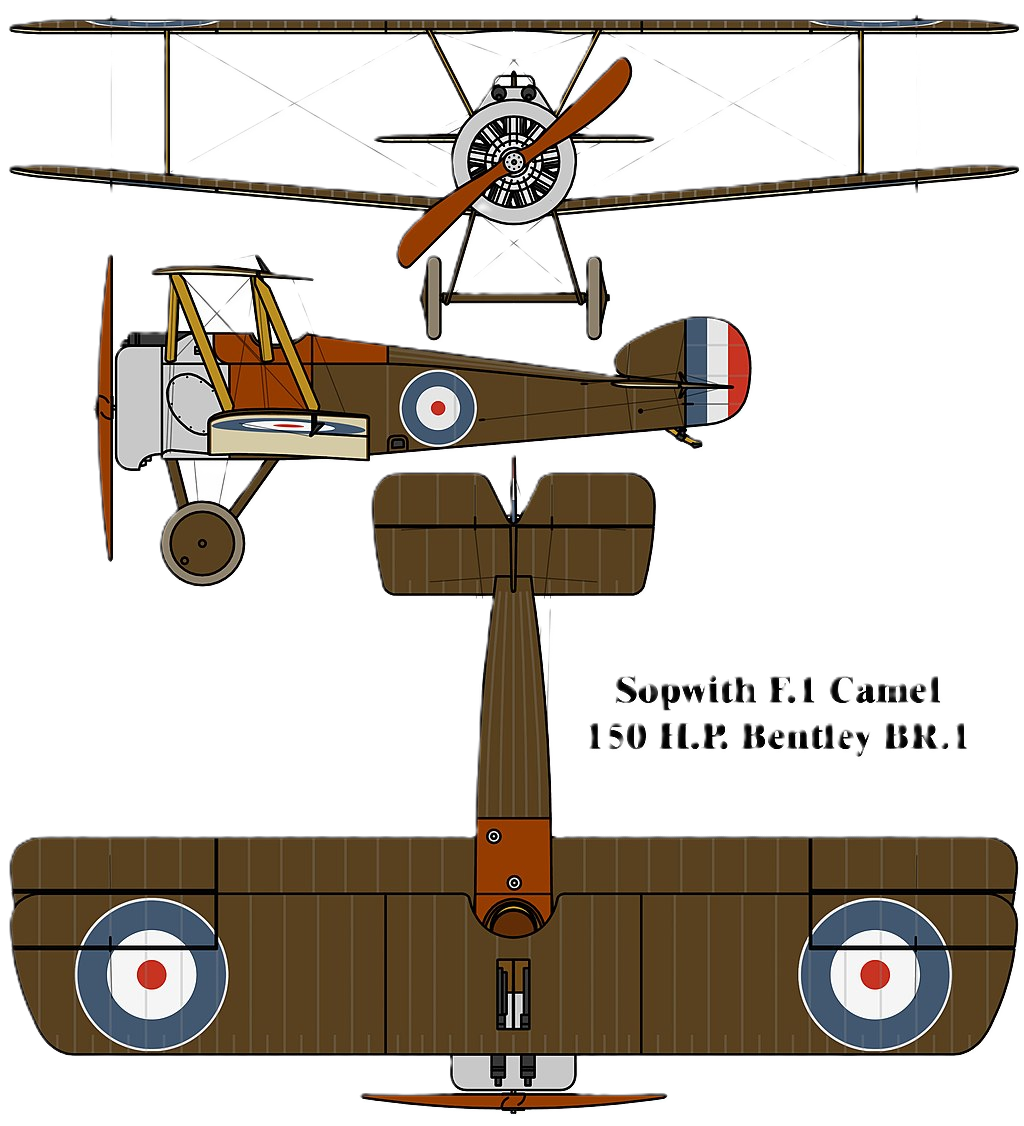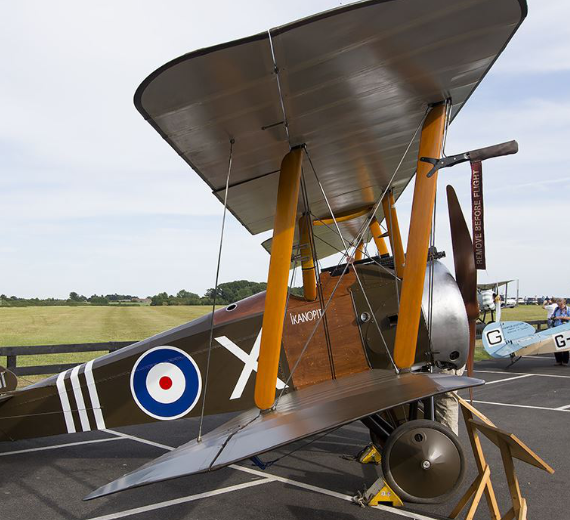Sopwith Aviation Sopwith Camel F.1
 |
|
| Sopwith Camel | |
| Role | Biplane fighter |
|---|---|
| Manufacturer | Sopwith Aviation Company |
| Designer | Herbert Smith |
| First flight | 22 December 1916 |
| Introduction | June 1917 |
| Retired | January 1920 |
| Primary users | Royal Flying Corps Royal Naval Air Service Royal Air Force |
| Number built | 5,490 |
| Developed from | Sopwith Pup |
.
History Sopwith Aviation Company
Sopwith Camel F.1

The Sopwith Camel is a British First World War-era single-seat biplane fighter aircraft that was introduced on the Western Front in 1917. It was developed by the Sopwith Aviation Company as a successor to the Sopwith Pup and became one of the best known fighter aircraft of the Great War.
The Camel was powered by a single rotary engine and was armed with twin synchronized Vickers machine guns. Though difficult to handle, it was highly manoeuvrable in the hands of an experienced pilot, a vital attribute in the relatively low-speed, low-altitude dogfights of the era. In total, Camel pilots have been credited with downing 1,294 enemy aircraft, more than any other Allied fighter of the conflict. Towards the end of the First World War, the type also saw use as a ground-attack aircraft, partly because the capabilities of fighter aircraft on both sides had advanced rapidly and left the Camel somewhat outclassed..
Design

The Camel had a conventional design for its era, with a wire-braced wooden box-girder fuselage structure, an aluminium engine cowling, plywood panels around the cockpit, and a fabric-covered fuselage, wings and tail. While possessing some clear similarities with the Pup, it had a noticeably bulkier fuselage. For the first time on an operational British-designed fighter, two 0.303 in (7.7 mm) Vickers machine guns were mounted directly in front of the cockpit, synchronised to fire forwards through the propeller disc – initially this consisted of the fitment of the Sopwith firm's own synchronizer design, but after the mechanical-linkage Sopwith-Kauper units began to wear out, the more accurate and easier-to-maintain, hydraulic-link Constantinesco-Colley system replaced it from November 1917 onward. In addition to the machine guns, a total of four Cooper bombs could be carried for ground attack purposes
0
KmCeiling
0
KmCombat RANGE
0
Km/hAircraft Speed
0
Max Crew
Photo Gallery
Sopwith Aviation Company
Sopwith Camel F.1


Sopwith Aviation Company
Sopwith Camel F.1
General Info
-
-
-
Crew: 1- Length: 18 ft 9 in (5.72 m)
- Wingspan: 28 ft 0 in (8.53 m)
- Height: 8 ft 6 in (2.59 m)
- Wing area: 231 sq ft (21.5 m2)
-
-
Powerplant
-
-
- Empty weight: 930 lb (422 kg)
- Gross weight: 1,453 lb (659 kg)
- Zero-lift drag coefficient: CD0.0378
- Frontal area: 8.73 square feet
- Powerplant: 1 × Clerget 9B 9-cylinder air-cooled rotary piston engine, 130 hp (97 kW)
-
Performance
- Maximum speed: 113 mph (182 km/h
- Stall speed: 48 mph (77 km/h, 42 kn)
- Range: 300 mi (480 km, 260 nmi)
- Service ceiling: 19,000 ft (5,800 m)
- Rate of climb: 1,085 ft/min (5.51 m/s)
.
Links to Youtube & Others
Although in operational use, the Vulcan typically carried various nuclear armaments, the type also had a secondary conventional role. While performing conventional combat missions, the Vulcan could carry up to 21 1,000 lb (454 kg) bombs inside its bomb bay.
Sopwith Aviation Sopwith Camel F.1
The Vulcan's only combat missions took place towards the end of the type's service in 1982. During the Falklands War.
Youtube Link
The missions performed by the Vulcan became known as the Black Buck raids, each aircraft had to fly 3,889 mi (6,259 km) from Ascension Island to reach Stanley on the Falklands. Victor tankers conducted the necessary air-to-air refuelling.
